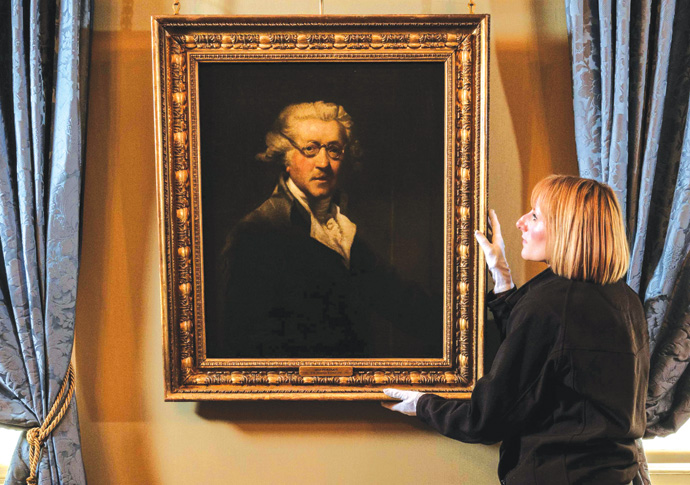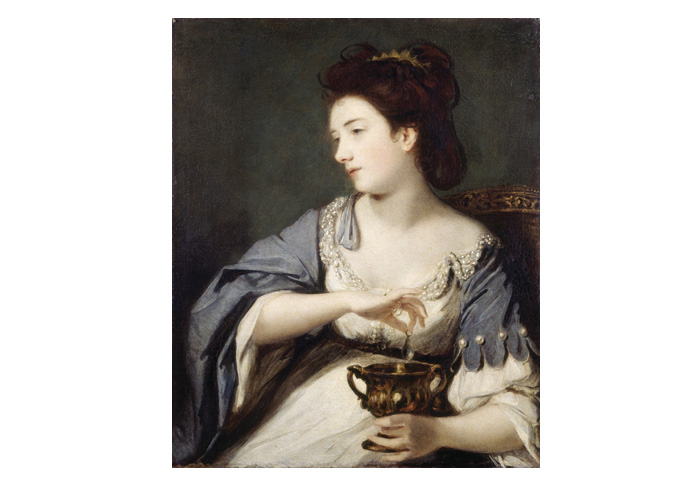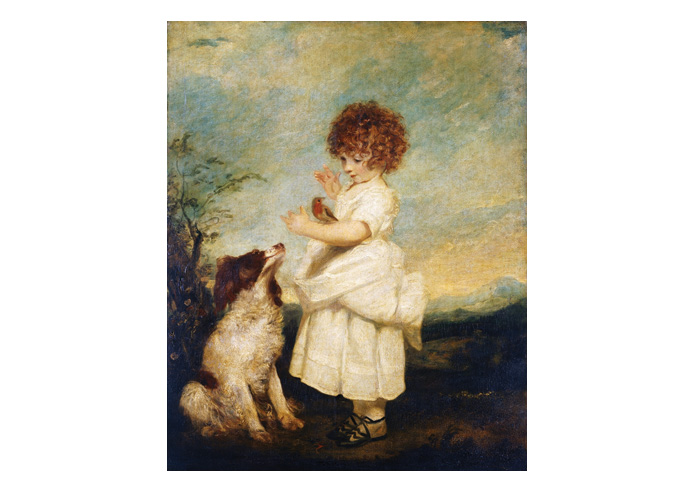Portrait of Reynolds
Kenwood House is exhibiting all of its works by Sir Joshua Reynolds to celebrate his 300th birthday. Dan Carrier talked to the curator
Thursday, 20th July 2023 — By Dan Carrier

English Heritage curator Louise Cooling positions Joshua Reynolds’ self-portrait
HIS talent would change British art for ever, creating a style that became a default for generations of painters, and passing on his skills via his work founding the Royal Academy.
This week is the 300th anniversary of the birth of Joshua Reynolds. To mark the occasion, Kenwood House – which has 16 of his masterpieces in its collection – has for the first time ever brought the works into one single exhibition following months of detailed conservation work.
“He was the first serious British portrait painter,” curator Louise Cooling explains.
His rise to prominence was kickstarted by a number of factors. “If you look at the 18th century, there are clear elements of British society that are recognisable to us today,” explains Louise.
“Things we take for granted, such as consumerism, flourish. The media is born, people began to buy prints and society became more visually aware.
“Trade was growing, the navy was traversing the seas, it was the beginning of imperialism. Money was flowing and a society with more money is good for artists.”
Reynolds was born in Devon on July 16, 1723, into a comfortable background, his father a master at Balliol College.
“He was encouraged at an early age to read widely and to paint and draw, which his father referred to as ‘his great genius,’” adds Louise.

Kitty Fisher as ‘Cleopatra’ by Sir Joshua Reynolds, 1759
Aged 17, he was apprenticed to a painter called Thomas Hudson. Reynolds stayed for three years rather than the usual seven. Living in Plymouth, he found a market for portraits among Royal Navy officers and the upper classes of the bustling port.
“Joshua met a naval officer, Augustus Keppel. Keppel allowed Reynolds to accompany him on a voyage to the Mediterranean. He spent three formative years exposed to the 16th- and 17th-century Old Masters, Roman antiquities and classical art,” says Louise.
“He worked diligently and kept his sketch books, using them as a visual repository he could refer back to throughout his career.”
Back home, Reynolds settled in Lincoln’s Inn.
“Keppel sat for a full-length portrait. It was like nothing seen before,” says Louise. “It had a backdrop of cliffs, waves crashing in, a ship at sea with the officer staring out across a beach. He is making a pose like he is Apollo.”
This classical reference illustrates the Georgian infatuation with the ancient world.
“It is a dynamic portrait,” says Louise. “No one in England had done this. Reynolds kept it in his studio. Potential clients would say – will you do something like that for me?”
He experimented with colours, adding different oils and varnishes – so much so that today conservators become detectives as they decipher the ingredients. They did not always last – his paintings tell the story behind their creation through cracked or faded sections.
Advances in printing led him to sell work widely. “He made engravings,” says Louise.
“They were bought by the new middle classes – and it added to his status as they further advertised his work.”

Master Philip Yorke, later Viscount Royston, by Reynolds, 1789
Reynolds next big move echoes down 300 years. He had noted how in France and Italy there was a academy system – but Britain had nothing comparable.
“He knew the importance of education,” says Louise. “That led to the founding the Royal Academy in 1768, to which he was appointed the first president.”
Another facet of his work that broke boundaries was his way of combining what was seen as a three-tier system of subject matters. Reynolds took elements from all of them, explains Louise.
This hierarchy had still life and landscapes at the bottom. Portraiture was in the middle and the top level featured mythology or biblical scenes.
“His portraiture brought this together,” says Louise. “He painted figures in Grecian roles, or as Shakespeare characters, or Roman gods. He elevated portraiture – calling it The Great Style.”
Georgian society loved Reynolds. The Prince Regent was a patron and he had friends from all walks of life – as the portrait of Kitty Fisher reveals. A staymaker’s daughter, she came from humble beginnings.
“Her charm and intelligence made her a fashionable courtesan. Fishermania swept London,” reveals Louise.
“Kitty was a great subject. He painted her as Cleopatra, about to dissolve a pearl earring into a glass of vinegar. There is the sideways look, an expanse of chest, the dress slipping off the shoulder. It was sexy, it was rich.”
Painting Kitty helped Reynolds cement his reputation. “Kitty was famous for being famous,” says Louise. “Her portrait sold as prints, which shows her breadth of her fame.”
Reynolds’ work eventually fell out of fashion before enjoying a comeback. “His teachings remained popular up until the rise of the Pre-Raphaelites in the mid-19th century,” adds Louise. “But at the turn of the 20th century, aristocratic families started to lose their fortunes.
“They sold art, and those that went first were determined by their subject matter, so are dominated by images of women and children – not the man of the house. That in turn made them the most popular type of Reynolds – and it means it is no surprise the Kenwood collection focuses on these subjects.”
• Spotlight on Reynolds runs until November 19 at Kenwood House